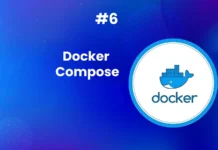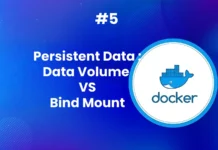Introduction: A Beginner’s Guide to Docker
Welcome to the world of Docker! If you’re new to Docker, you’re in the right place. This article is the first part of a Docker learning series where we’ll explore Docker from the basics to advanced concepts, starting with its introduction and setup. As we dive in, we’ll break down Docker’s key components—Docker Images, Docker Containers, and Docker Registries—and how they work together in a simple workflow known as Build-Ship-Run.
By the end of this guide, you’ll not only understand what Docker is but also have it installed and ready to use on your system. So let’s jump right in and start your journey towards mastering Docker!
If you’re already familiar with Docker and have it set up, feel free to skip ahead to the next article on Docker networking. Otherwise, let’s focus on setting up Docker and covering its core concepts.
What is Docker?
Docker is a platform that simplifies the process of building, shipping, and running applications in containers. Containers are lightweight, portable units that bundle an application with all its dependencies, so it can run consistently across different environments—whether it’s your local machine, a testing environment, or a production server.
Docker changed the game for developers by offering a way to package software in a way that’s platform-independent and lightweight, unlike traditional virtual machines (VMs).
Before we move into more technical details, let’s break down the key components of Docker:
- Docker Images: Think of a Docker image as a blueprint for your application. It contains the app, libraries, dependencies, and configuration files needed to run it. Docker images are created from Dockerfiles, which are simple text files containing the instructions to assemble the image.
- Docker Containers: Containers are the live, running instances of Docker images. They are isolated from each other and from the host machine, ensuring that the application runs the same way no matter where it’s deployed.
- Docker Registries: A Docker registry is where you store and share Docker images. Docker Hub is the default public registry, but there are many others, and you can even run your own private registry.
Together, these components make Docker a powerful tool for streamlining the software development and deployment process.
Why Use Docker?
You might be wondering why Docker has become such a buzzword. Let’s talk about three main reasons:
- Isolation: With Docker, every application runs in its own isolated environment. This prevents conflicts between apps and dependencies, making the system more manageable and less prone to errors.
- Consistency: Docker images ensure that your application runs consistently across different environments. You’ll no longer hear the dreaded “it works on my machine” excuse!
- Efficiency: Docker containers are lightweight compared to traditional virtual machines. They start up quickly and consume fewer resources, making them ideal for scalable applications.
Setting Up Docker: A Step-by-Step Guide
1.1 Setting up Docker on Windows
If you’re using Windows Operating System, Docker Desktop is the recommended tool for running Docker on your local machine. Here’s a step-by-step guide to getting Docker set up on your Windows machine:
- Verify System Requirements: Ensure you’re running Windows (any edition: Home, Pro, or Enterprise) and that your system meets the minimum requirements for Docker Desktop.
- Download and Install Docker Desktop:
- Head over to the official Docker Desktop for Windows page to download the installer.
- During installation, you will be prompted to enable WSL2 (Windows Subsystem for Linux), which is the preferred backend for Docker on Windows. This option is more efficient than the old Hyper-V method.
- Enable WSL2:
- If you don’t already have WSL2 installed, Docker Desktop will guide you through setting it up. This includes downloading the WSL2 kernel update and ensuring it’s configured correctly. Be prepared for a couple of reboots as part of this setup.
- Choose Your Linux Distribution:
- After WSL2 is enabled, you’ll need to install a Linux distribution (e.g., Ubuntu) from the Microsoft Store. This distribution will act as the environment for running Docker containers.
- Configure Docker Desktop:
- Once Docker Desktop is installed, launch it and configure the settings by right-clicking on the Docker icon in the system tray and selecting Settings. Make sure WSL integration is enabled for the installed Linux distributions.
- Check Virtualization Settings:
- If you encounter errors related to Docker not starting, check that virtualization is enabled in your BIOS. Look for Intel VT-X or AMD-V settings, which must be enabled for Docker to function properly.
- Log In to Docker Hub:
- For seamless operation, log in to your Docker Hub account via Docker Desktop to increase your rate limits for pulling Docker images.
By following these steps, you’ll have Docker running on Windows with WSL2, enabling you to run containers efficiently within a Linux environment. You can further configure your Docker Desktop settings to optimize performance, such as allocating memory or CPU resources.
This setup allows you to run both Windows and Linux containers with ease, and with the power of WSL2, Docker Desktop ensures native-like performance on your machine.
1.2 Setting up Docker on Mac
Using Docker Desktop on macOS is straightforward compared to Windows. There’s no need to worry about BIOS or virtualization settings, and macOS comes with pre-installed shells like Bash and ZSH, making Docker setup easy.
To get started:
- Download Docker Desktop from the official site. Ensure you get the correct version for your Mac—either Intel or Apple Silicon.
- Install Docker Desktop by dragging it into your Applications folder.
- Sign up for a free Docker account at hub.docker.com, especially for increased download limits.
- Adjust resources if needed: Go to Preferences > Resources and allocate more CPU, RAM, or disk space, especially if working with larger workloads.
Once Docker is running, you’ll notice an icon in the menu bar. Docker Desktop is free for learning, small business use, and individual development. Only enterprise users need to pay.
Optional tweaks:
- Enable experimental features for better performance, especially for file sharing between host and container.
Finally, clone any course repositories from GitHub, and you’re ready to start using Docker on your Mac!
1.3 Setting up Docker on Linux
Are you using a Linux desktop?
This section will guide you through installing Docker Desktop on Linux, which became available in 2022. After years of using Docker Engine, Docker Desktop provides a more user-friendly, GUI-based experience. We’ll cover:
- Installing Docker Desktop on Linux: We’ll focus on Ubuntu, using
apt-getto handle dependencies and package installation. - Adjusting Docker Desktop settings: Configure resources (CPU, RAM) and shared directories for optimal performance.
Docker Desktop offers easy resets, automatic updates, and a consistent experience across Linux, Mac, and Windows. While Docker Engine is still an option, Docker Desktop simplifies local container management. You’ll also need to log in to Docker Hub to avoid pull limits during the course.
2. Running Your First Docker Container
Let’s run a simple Docker container to ensure everything is set up correctly. Type the following command to pull and run the hello-world image:
docker run hello-worldDocker will pull the hello-world image from Docker Hub and run it in a new container. If the setup is successful, you’ll see a message indicating that Docker is working.
3. Understanding Docker Images and Dockerfiles
A Dockerfile is a text file that contains the instructions needed to create a Docker image. Let’s walk through a basic Dockerfile example:
#Use an official Python runtime as the base image
FROM python:3.8-slim
# Set the working directory in the container
WORKDIR /app
# Copy the current directory contents into the container at /app
COPY . /app
# Install any needed packages specified in requirements.txt
RUN pip install --no-cache-dir -r requirements.txt
# Make port 80 available to the world outside this container
EXPOSE 80
# Define environment variable
ENV NAME World
# Run app.py when the container launches
CMD ["python", "app.py"]
This Dockerfile does several things:
- FROM: Specifies the base image to use. In this case, it’s Python 3.8.
- WORKDIR: Sets the working directory in the container.
- COPY: Copies the app code into the container from host machine.
- RUN: Installs dependencies.
- CMD: Specifies the command to run when the container starts.
To build an image from this Dockerfile, run the following command in the terminal:
docker build -t my-python-app .This will create a Docker image called my-python-app that you can run using:
docker run -p 4000:80 my-python-appNow, your Python application is running inside a Docker container!
What’s Next?
This guide is just the beginning. Now that Docker is set up and you understand the basics, you can start experimenting with containers and Dockerfiles. In the next part of our Docker series, we’ll dive deeper into Docker networking, which allows containers to communicate with each other and the outside world.
Stay tuned for more as we continue this journey toward Docker mastery!





[…] If you’re just joining us, I highly recommend reading the first article on Docker Introduction and Setup and the second article on Docker Networking to get a solid foundation. Now, let’s get into […]
[…] A Beginner’s Guide to Docker: Introduction and Setup for Newbies […]
[…] A Beginner’s Guide to Docker: Introduction and Setup for Newbies […]